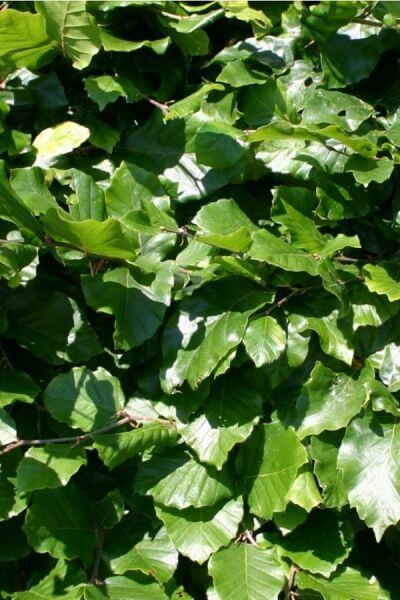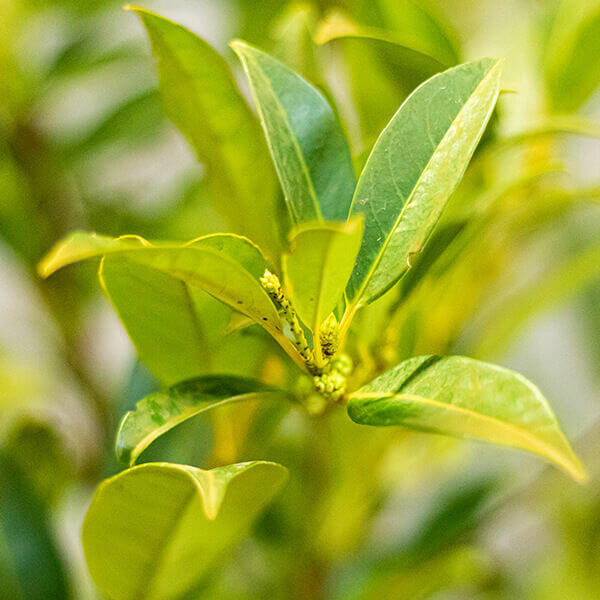Hedge Plants For Ornamental Hedges
Hedge Plants For Ornamental Hedges
Blog Article
Best Hedging Plants For Ground Cover
Boost your garden's attraction with lush hedge ranges such as Yew (Taxus), Thuja, Laurel, Photinia, and Bamboo, celebrated for their structural stability and ecological benefits.
Yew and Thuja provide evergreen protection and winter strength, while Laurel offers fast development and broad, fragrant leaves.
Photinia adds seasonal charm with its lively red foliage, and Bamboo provides a low-maintenance, tranquil atmosphere.
These hedges improve air quality, lower noise, and produce tranquil, private areas.
Correct planting, spacing, and upkeep ensure energetic development and eco-friendly harmony.
Check out how these lavish ranges can raise your garden's charm and wellness.
Key Takeaways
Transform Your Garden With Lush Hedge Ranges
- Select Yew for its dense, evergreen development and unrivaled longevity.
- Go with Laurel for its quick development and broad leaves, ensuring quick privacy.
- Pick Photinia for its dynamic seasonal foliage, which turns a striking dark red.
- Utilize Bamboo for a low-maintenance, winter-hardy hedge with visual appeal.
- Area plants 2-3 per meter and prune routinely for optimal growth and health.
Popular Hedge Plants
When changing a garden with rich hedge ranges, it's necessary to consider popular hedge plants such as Yew, Thuja, Laurel, and Photinia due to their unique qualities and advantages.
Yew (Taxus) is highly esteemed for its longevity and thick, green development, making it a prime choice for withstanding landscapes.
Thuja is kept in mind for its evergreen foliage and robust winter season strength.
Photinia includes seasonal vibrancy with red leaves that darken with time, developing vibrant visual appeal.
Laurel uses quick development and aromatic, broad leaves, perfect for quick personal privacy.
Additionally, Bamboo is an exceptional option for ambiance, using a low-maintenance, winter-hardy alternative that enhances the garden's aesthetic with its sophisticated, swaying walking sticks.
These choices cater to a variety of horticultural needs and choices.
Advantages of Garden Hedges
Garden hedges use a wide variety of advantages, making them a valuable addition to any landscape. These natural barriers are affordable to execute and supply considerable wind security, improving air blood circulation and contributing to sound reduction. The thick foliage of hedges like Thuja and Beech guarantees privacy by blocking exposure, creating a remote and peaceful environment.
Hedges also play an important role in microclimate regulation, supplying a stable environment that cultivates plant growth and minimizes temperature level fluctuations. Their detailed leaf structures filter pollutants, enhancing air quality and contributing to a much healthier garden ecosystem.
Additionally, hedges excel in sound decrease, taking in and deflecting acoustic waves to lower ambient noise levels. This double performance of offering both visual and acoustic privacy boosts the overall serenity and visual appeal of any garden.
Planting and Maintenance Tips
For a successful hedge, careful preparation of the planting area is important. Make sure the soil has appropriate pH and drain to support strong root development.
Area the plants appropriately for the picked types. Water the hedge frequently throughout its preliminary growth phase, adjusting as required with seasonal modifications.
Execute a methodical pest control and illness prevention technique, utilizing chemical or organic treatments when necessary. Regularly inspect for aphids, termites, and fungal infections.
Apply mulch to maintain moisture and reduce weeds. Seasonal pruning promotes thick development and air blood circulation, essential for plant health.
Following these guidelines will help you cultivate a dynamic, well-kept hedge that boosts the charm of your garden.
Spacing and Trimming Standards
Spacing and Cutting Standards
Appropriate spacing and trimming are crucial for cultivating healthy, visually appealing hedges. Sufficient spacing ensures each plant receives enough nutrients, light, and airflow.
Follow these guidelines for optimum hedge maintenance:
- Spacing: Position hedge plants 2-3 plants per meter to encourage robust growth.
- Pruning Methods: Regular pruning is vital for preserving wanted hedge height and shape. Cut brand-new development in summertime and cut back older wood during winter.
- Seasonal Care: Change cutting schedules and methods according to seasonal requirements to make sure plant health.
- Hedge Height: Frequently display and cut to preserve the desired hedge height and achieve consistent aesthetics.
Sticking to these steps will guarantee your hedge grows, enhancing both the appeal and functionality of your garden.
Picking the Right Hedge
Selecting the Right Hedge
Picking the appropriate hedge includes assessing factors such as fully grown height, foliage density, and ecological resilience. check here Effective hedge plant selection needs understanding each species' development qualities and site-specific adaptability.
For instance, Yew (Taxus) offers exceptional longevity and thick growth, while Thuja is notable for its winter season resilience. In addition, considering upkeep requirements is essential; fast-growing types like Laurel or Privet demand routine trimming, whereas low-maintenance choices like Bamboo or Ivy might be more effective for those seeking minimal maintenance.
Environmental elements such as soil type, light availability, and moisture conditions need to also assist the selection process. This mindful approach ensures the picked hedges will thrive, offering both practical and aesthetic advantages to the garden landscape.
Shipment and Planting Guidance
To guarantee your hedge plants thrive, they must be provided by specialized couriers and planted immediately upon arrival.
Follow these essential steps for effective planting:
- Soil Preparation: Improve the soil with raw material to improve drainage and nutrient content.
- Planting Depth: Develop a trench two times the width and equal to the depth of the root ball.
- Watering Techniques: Water thoroughly after planting, keeping the soil regularly wet but not saturated.
- Mulching: Apply a layer of mulch to keep wetness and reduce weeds.
Consumer Support and Service
Provided the essential function of timely support in horticultural pursuits, our customer support group is offered 6 days a week through telephone, e-mail, and social networks to provide expert advice and quickly attend to any concerns. Their dedication to fast response times makes sure customer fulfillment by dealing with questions associated with plant health, optimum planting techniques, and upkeep schedules.

Response Time
-------------------
Telephone
Six days a week
Within 24 hours
This comprehensive assistance system, reinforced by an excellent 9.3/ 10 consumer ranking, highlights our dedication to improving the gardening experience for each client.
Frequently Asked Concerns
The Length Of Time Does It Consider Hedge Plants to Establish?
Hedge plants typically require one to 3 years to become completely established, with the specific duration differing by species and growing conditions.
Efficient care during this vital duration is important for robust development. Consistent watering, watchful weed control, and appropriate fertilizer application are critical in promoting strong root advancement.
For example, fast-growing types like Laurel might develop faster, while slower-growing varieties such as Yew may take longer. Persistent maintenance speeds up the establishment process, leading to dense and healthy hedges.
What Are the Finest Hedge Plants for Privacy?
The question of the very best hedge plants for privacy includes assessing evergreen and deciduous alternatives.
Evergreen hedges like Thuja, Laurel, and Cypress offer year-round coverage, making sure constant personal privacy.
On the other hand, deciduous hedges such as Beech offer seasonal personal privacy, shedding leaves in chillier months.
Key maintenance pointers for personal privacy hedges include routine cutting, fertilizing in spring, and proper spacing-- normally 2 to 3 plants per meter.
In addition, constant watering and persistent weed removal are vital for promoting healthy, dense development.
Can Hedge Plants Draw In Wildlife to My Garden?
Yes, hedge plants can attract wildlife to your garden by supplying important advantages like shelter, food, and nesting sites, thereby improving local biodiversity. Yew, holly, and laurel are excellent for bring in birds, while ivy supports a variety of bugs.
However, it is very important to note that there are some disadvantages, such as increased upkeep to manage insects and routine upkeep. Thoroughly selecting and preserving hedge ranges can help balance these advantages and drawbacks, ultimately promoting a lively and sustainable environment in your garden.
Exist Any Blooming Hedge Plants Available?
Yes, there are flowering hedge plants readily available that can enhance the beauty of your garden.
For example, Elaeagnus, also called Olive Willow, produces fragrant white flowers in the fall, adding a touch of beauty.
Photinia, another popular option, showcases lively red leaves that grow into an abundant green, creating a dynamic visual impact throughout the seasons.
To make sure these plants grow, it's important to practice appropriate pruning strategies and seasonal upkeep, such as trimming new growth in the summertime and cutting down in the winter season.
These procedures will assist keep the health and aesthetic appeal of your blooming hedges.
How Do I Avoid Bugs in My Hedge Plants?
To avoid bugs in hedge plants, use natural pest control methods and maintain proper hedge care. Introduce advantageous bugs like ladybugs, which take advantage of hazardous insects, to produce a balanced community.
Routinely inspect your hedges for signs of infestation and quickly eliminate any affected parts to prevent the spread. Ensure the health of your hedges by using well balanced fertilizers and offering adequate water.
Utilize mulching to retain soil wetness and correct spacing to lower plant tension and promote robust growth. These practices collectively help in minimizing insect concerns and keeping a healthy hedge.
Conclusion
In essence, selecting the right hedge varieties such as Yew, Thuja, and Laurel can change any garden into a relaxing haven. These plants provide year-round greenery, enhance visual appeal, and deal practical benefits like sound decrease and wind protection.
Proper planting strategies, accurate spacing, consistent watering, and seasonal trimming are important for optimal development.
Trusted shipment services and expert consumer support ensure a smooth experience from purchase to planting, making it simpler than ever to raise your outdoor area.
Garden hedges provide a multitude of advantages, making them a valuable addition to any landscape. These natural barriers are cost-efficient to execute and supply substantial wind protection, boosting air flow and contributing to sound reduction. The thick foliage of hedges like Thuja and Beech ensures personal privacy by obstructing exposure, developing a secluded and peaceful environment.

Pruning Strategies: Routine pruning is important for maintaining wanted hedge height and shape. Cut new development in summertime and cut back older wood during winter season.
Report this page